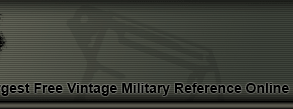German POLICE SWORD - EARLY SS
The Schutzstaffel, German for "Protective Echelon", abbreviated SS, was a major Nazi organization
under Adolf Hitler and the Nazi Party. The SS grew from a small paramilitary unit to a powerful
force that served as the Führer's "Praetorian Guard," the Nazi Party's "Shield Squadron" and a
force that, fielding almost a million men, both on the front lines and as political police.
Initially numerically smaller than Ernst Röhm's Sturmabteilung, abbreviated SA, the SS grew in
size and power due to its exclusive loyalty to Hitler. Under Himmler, the SS selected
its members according to the Nazi ideology. Creating elite police force.
The sword shown on this page is one of the early swords employed by the SS police force.
|

The design of the sword consisted of a round black handle, evenly divided by a vertical
metal strip with metal rings emmineting out of it and covering the total circumference
of the handle. With a round metal pommel. The handguard extends into a "D" shape on
one side and into a much shorter curly piece on the other.
Complete with a black metal scabbard with a single suspension ring on the side. The
throat of the scabbard is adorned with a silver metal celtic design. The tip is
covered with another silver color metal fitting.
|
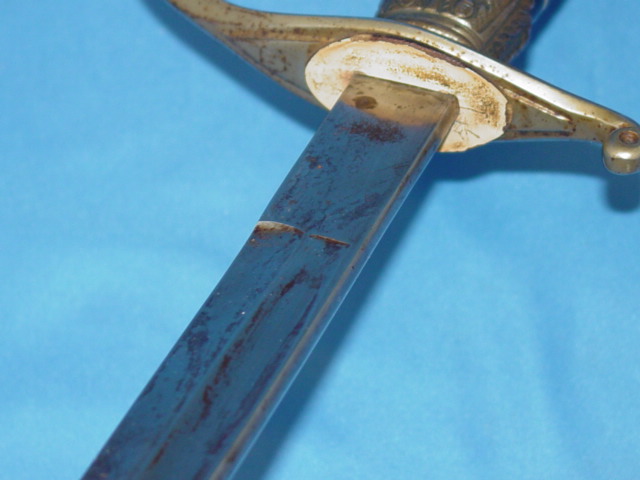 |
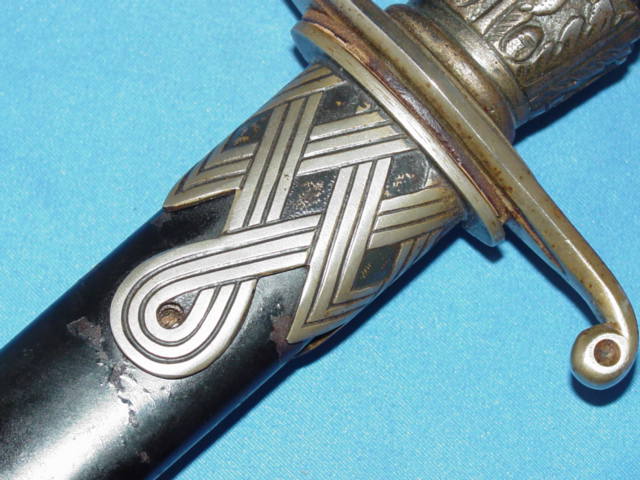 |
|
This page is a recognition and identification guide for German bayonets. Multiple
detailed photos of a specific sample are provided. Descriptions point out specific
points that should be noted.
One of the most commonly asked questions is "How much is my German bayonet worth?".
A price guide is included here to address this question. The value of the Nazi bayonets is
reviewed over a period of several years. A trend can be observed. The present worth
of the police sword in the collector's market is illustrated.
This service is provided free of charge to the visitor/enthusiast courtesy of
MilitaryItems.com,
a company dedicated
to the preservation of military history and to providing quality military antiques and
collectibles to museums, institutions and the general public.
|
|
|
|
The handle of the sword was adorned with the German police eagle. The design consisted
of a verical oval wreath. The police eagle placed in the center. The claws are cluthing
a smalle, round wreath that has a swastika in the center. The wings of the eagle are
extended. The head is facing to the left. The material of construction appears to be
bronze.
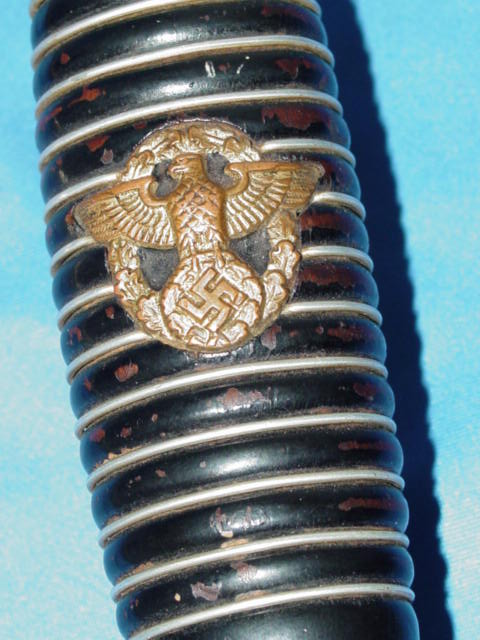
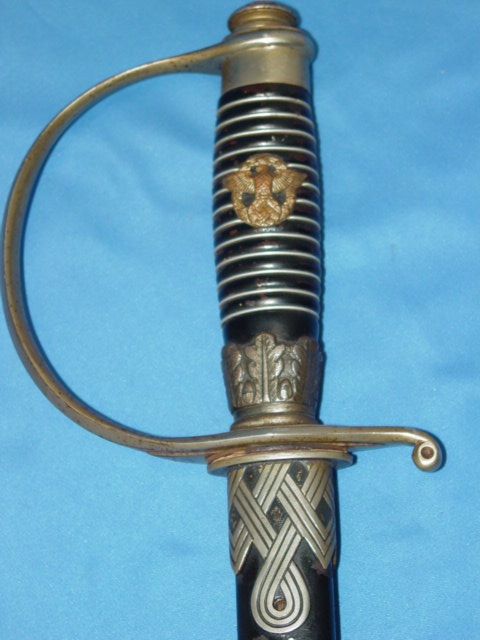

The regular German police and the SS police
shared virtually the same sword during the early days of their creation. The primary
difference was in the markings. A line version of the SS runnes was stamped on the
handguard and on the throat of the scabbard. The runnes were enclosed in a square
frame.
In later years the SS swords developed their own unique characteristics that differentiated
them from the other swords.
|


The pommel of the sword is of round flat shape. It has a several ridges protruding out from
the center.
The suspension ring is attached to the scabbard via the use of a bracket. The ring has freedom
of movement as to eliminate a stress point when the person is moving while wearing the sword.
The bracket has a square buckle to one side.
|
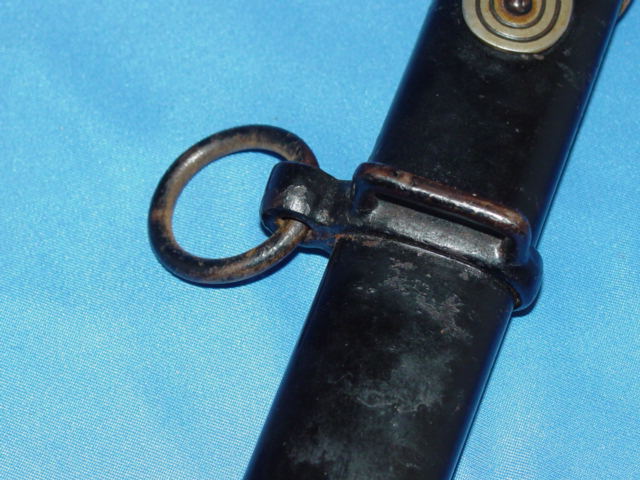
The tip of the scabbard has been embellished by adding a silver metal insert. Its
surface has a series of ridges that extend about 90% of the length of the piece.
It is secured by the use of one screw in each side.


|
Many German edge weapons are currently
reproduced.
It is becoming more difficult to be able to tell the fake ones from the real ones because
the quality of the reproductions is improving. The collector must become familiarized with
the construction style and materials employed in the manufacturing of this item.
Attention to the details is critical in order to be able to determine the authenticity of
the collectible.
If you have an interest is seeing other edge weapons of the Third Reich, you can do so by going
to our
WWII German daggers and Swords
identification guide, Where we cover blades from the Heer (Army), Navy (Kriegsmarine), Air Force
(Luftwaffe) and other organizations.
|


